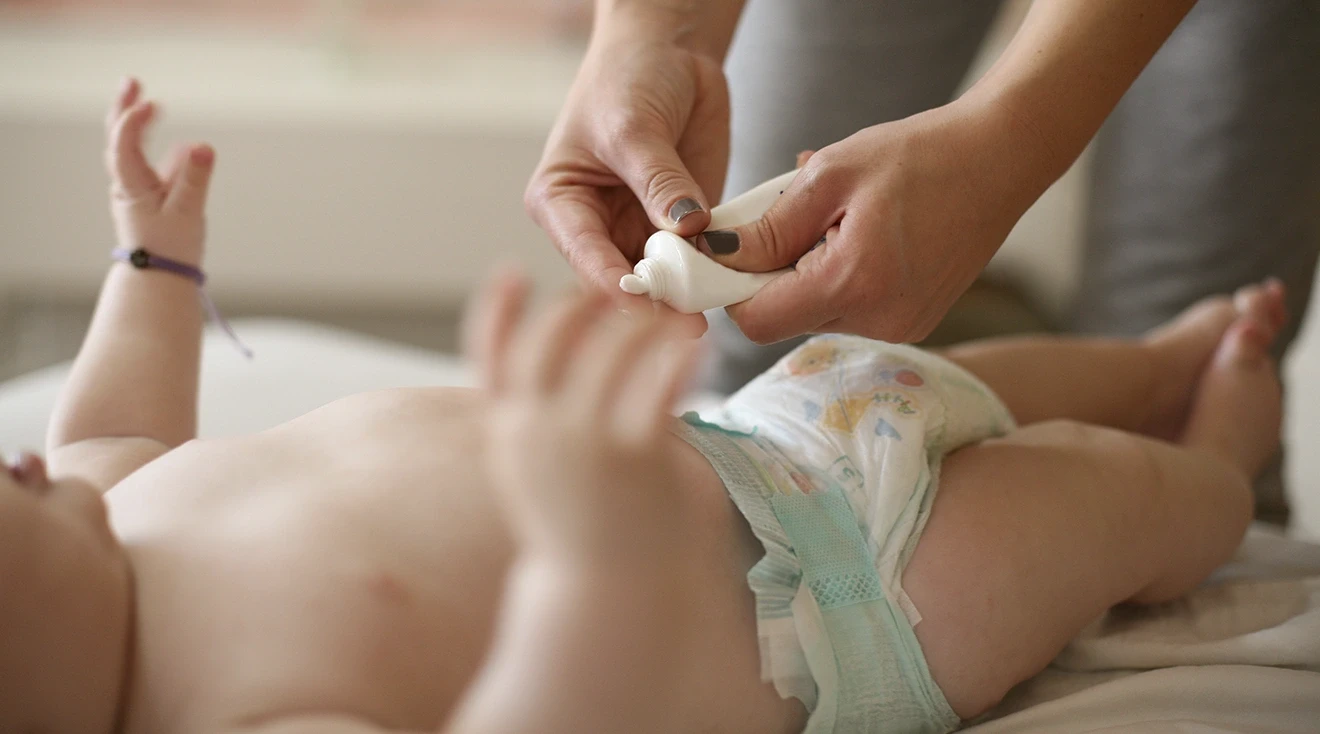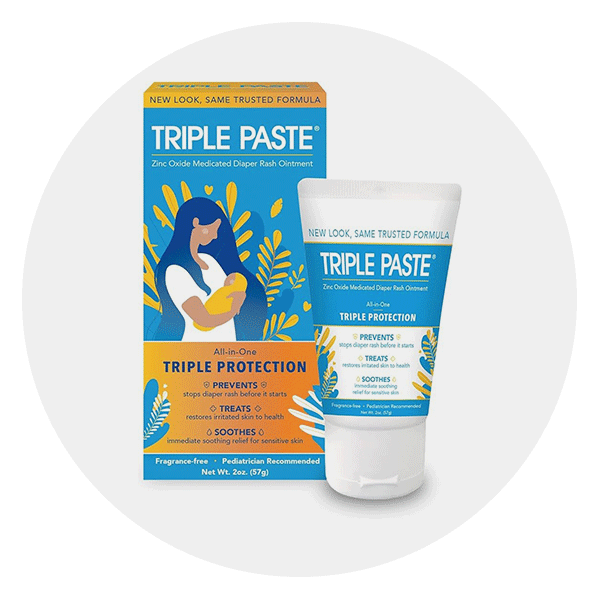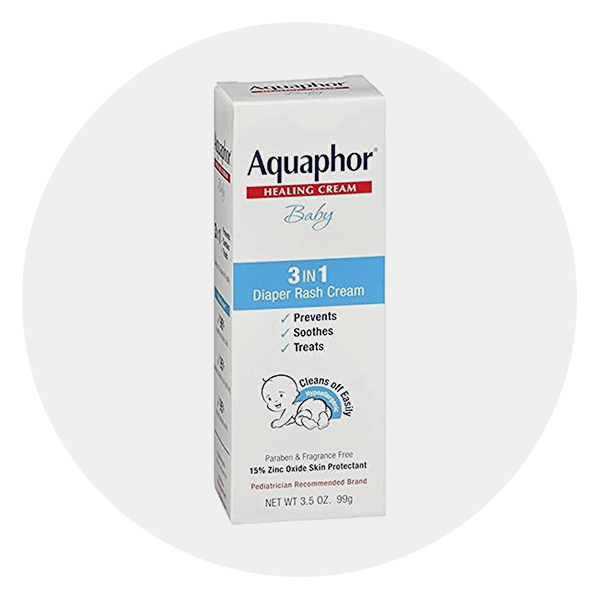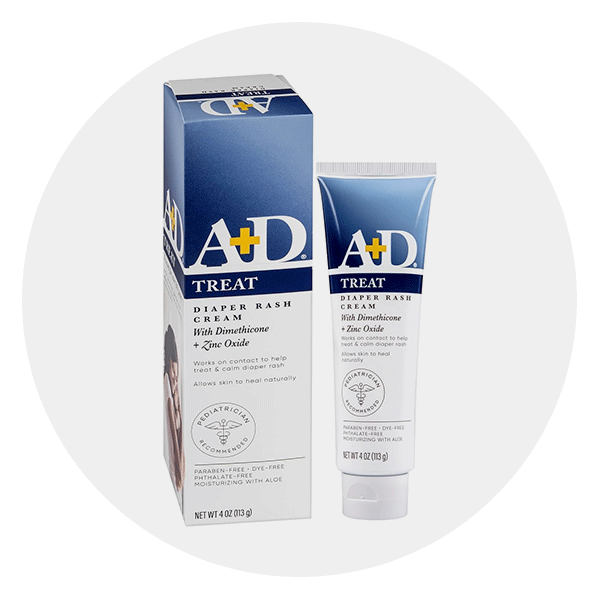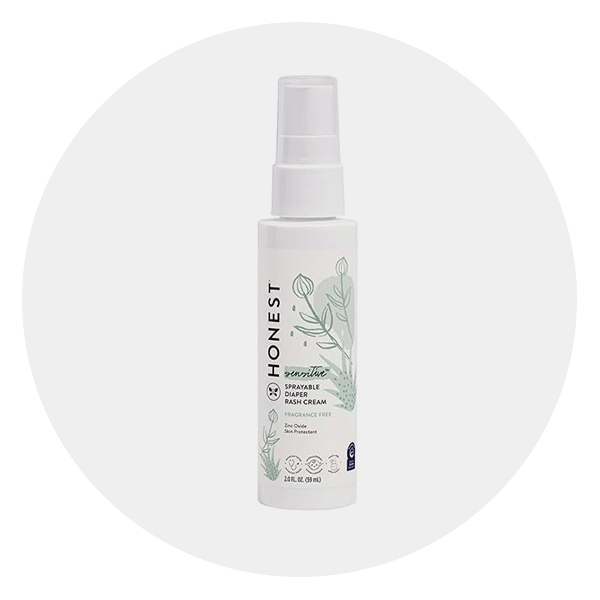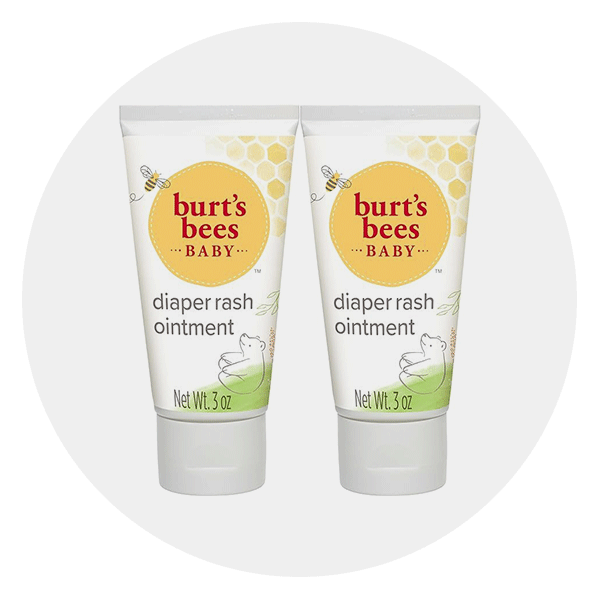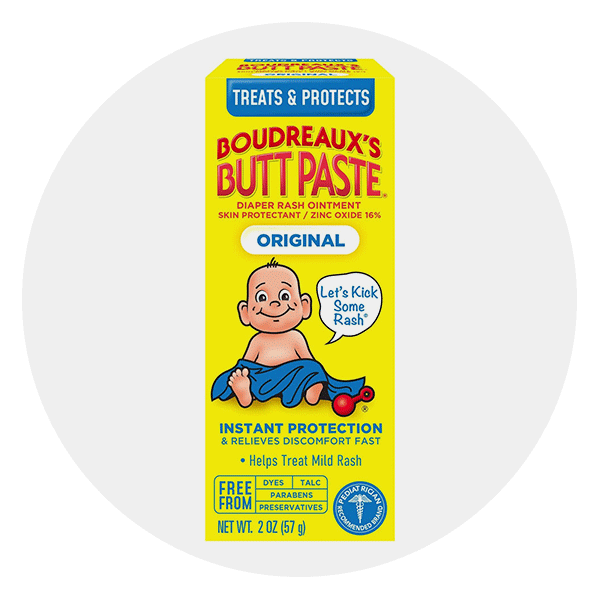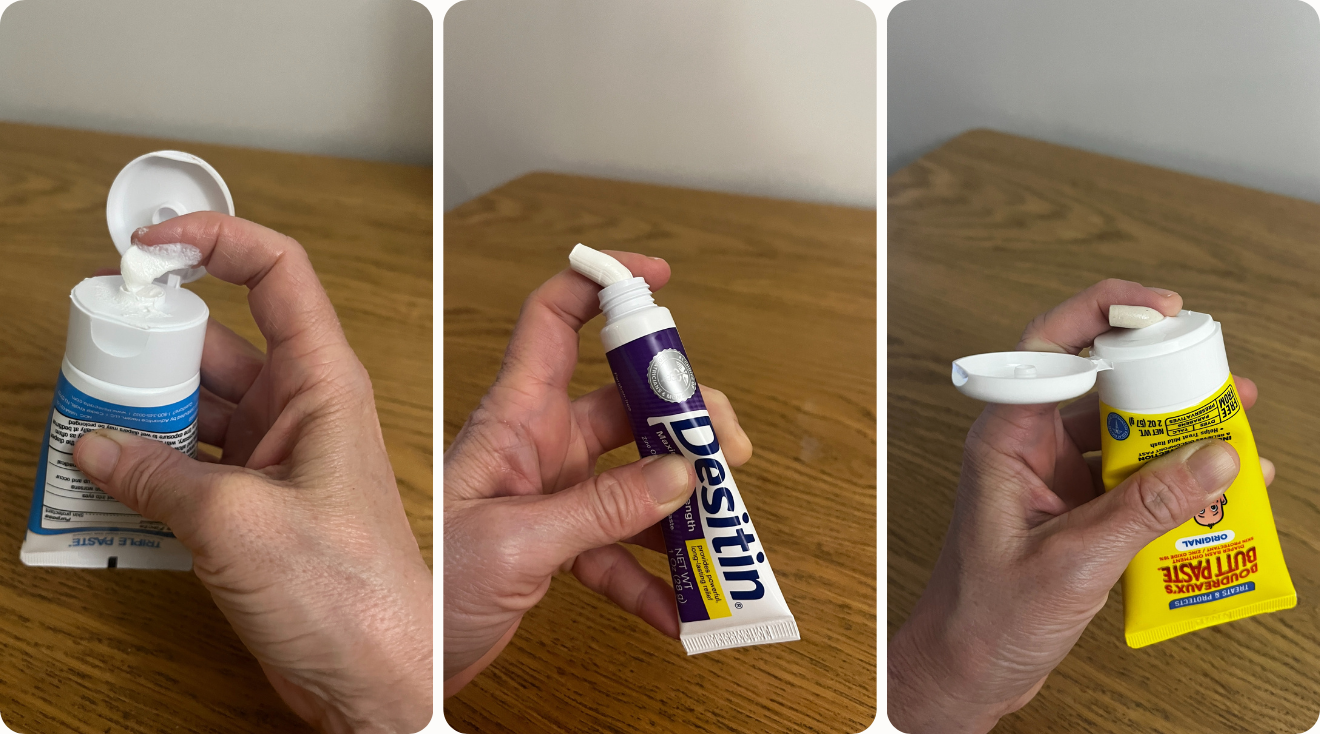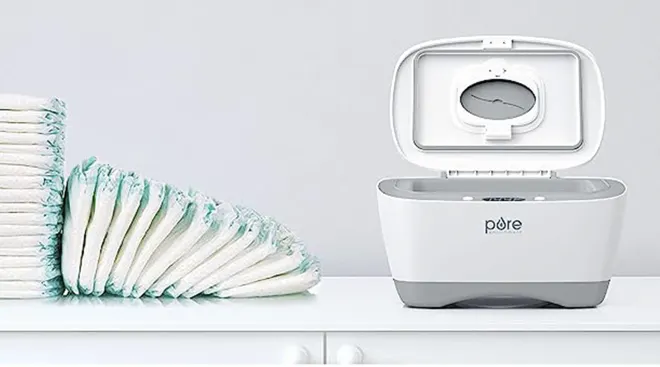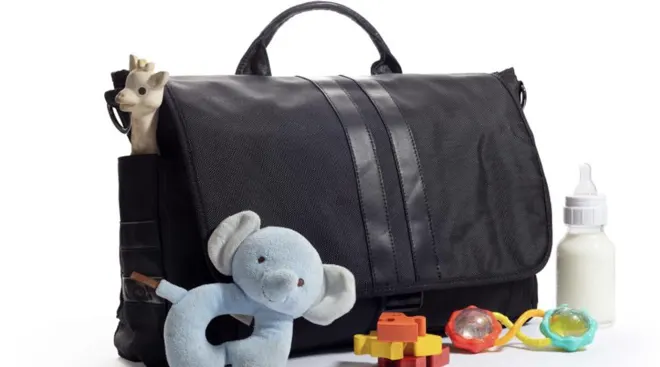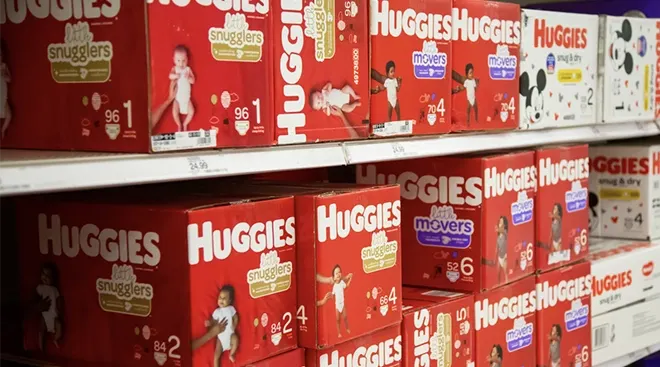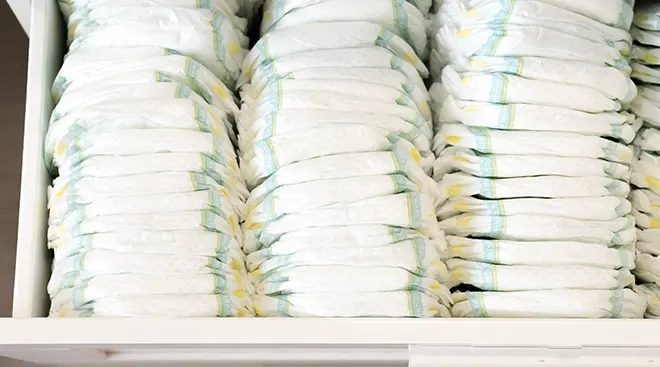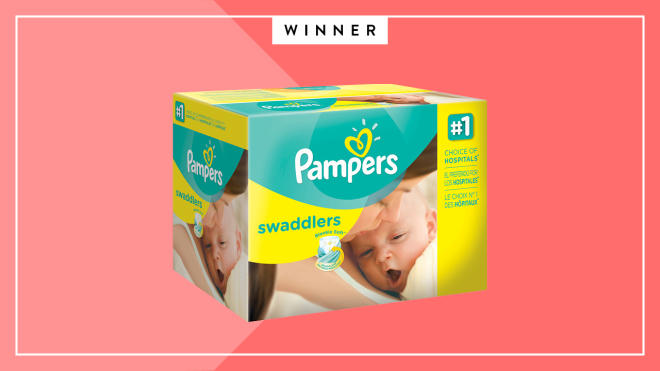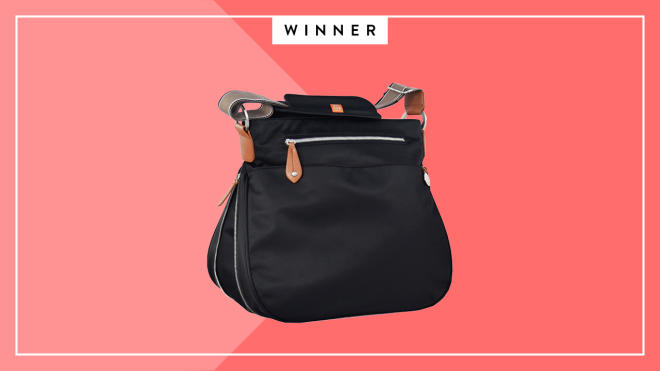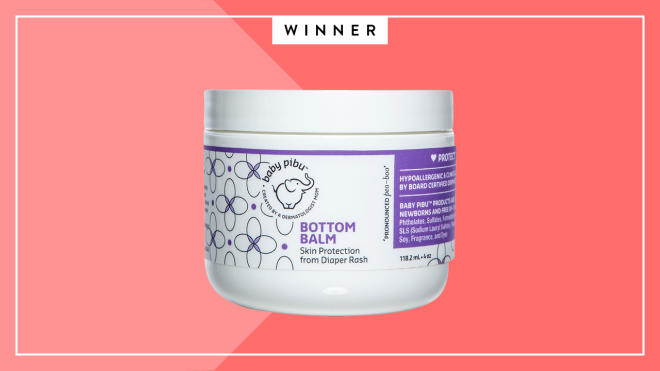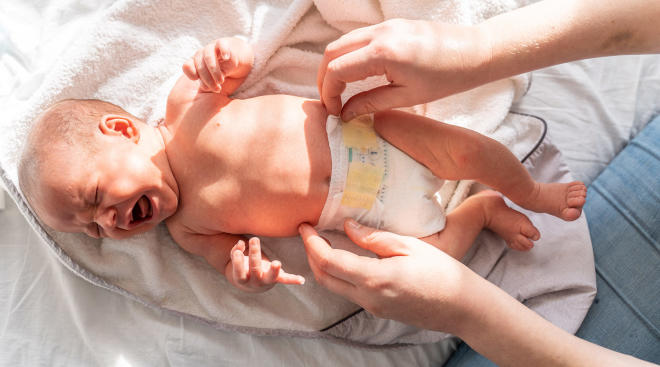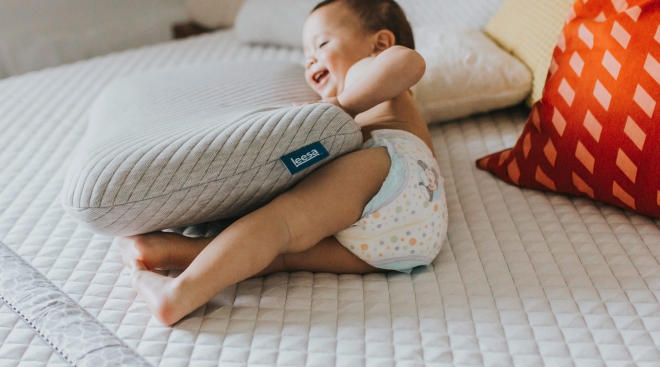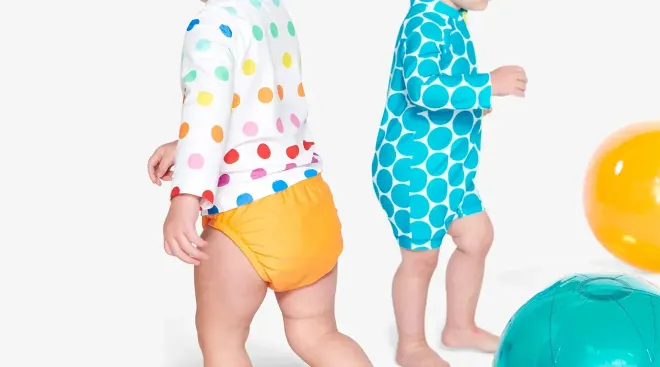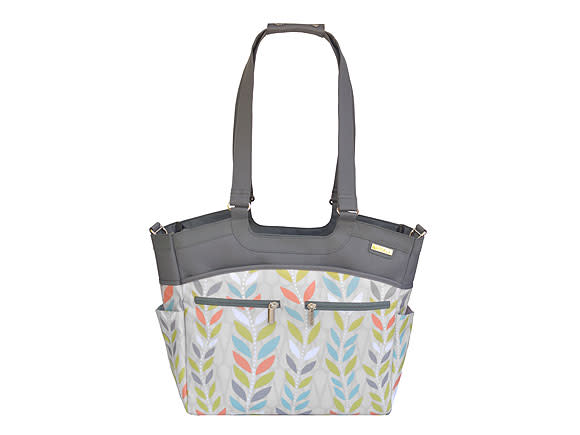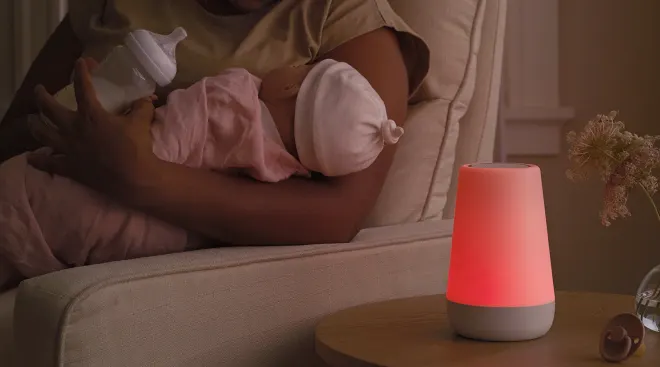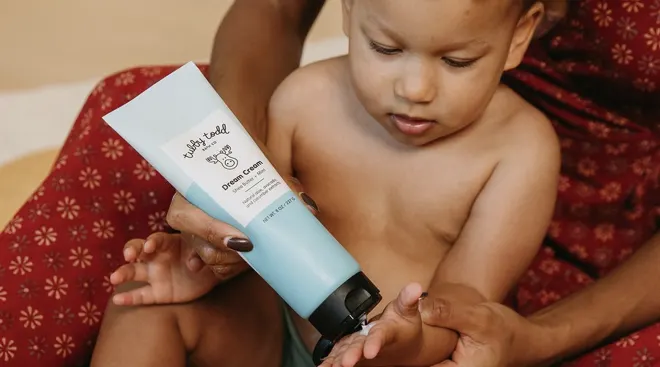The Best Diaper Rash Creams, Tested and Reviewed by Moms and Babies
In a nutshell:
Based on firsthand product testing and feedback from over 650 members of The Bump community, we chose Triple Paste as the overall best diaper rash cream, based on its high performance in treatment and prevention, as well as its high-quality ingredients and ease of use.

Diaper rash happens. No matter how often you change baby’s diaper and how diligent you are about keeping their tush clean and dry, those tell-tale red splotches are almost guaranteed to appear on their little cheeks at some point. Like sleep regressions and teething pain, diaper rash comes with the parenting territory. Luckily, many products are available to help soothe, heal and prevent it.
Most babies experience their fair share of diaper rash flare-ups until potty training starts. If you can nip it in the bud, however, all the better: Protection and prevention are the name of the game in the fight against diaper rash. “Frequent diaper changes and thick barrier creams are generally the mainstay of treatment for this,” says Britt Craiglow, MD, a Fairfield, Connecticut-based pediatric and adult dermatologist.
With so many options available at the drugstore (and online, of course), it can be overwhelming to figure out which diaper rash cream will work best for your little one. That’s why we rolled up our sleeves, flipped open caps, and tried some of the best diaper ointments out there for ourselves. Read on to find out what we learned.
To find the best diaper rash creams:
- I personally put these creams to the test, opening them up in my home and evaluating them for scent, texture, ease of use, quality of ingredients and value for money.
- We surveyed over 650 members of The Bump community to see which diaper rash creams worked best with their children, and which qualities were most important to them.
- We followed guidelines from the Mayo Clinic and made sure the products we chose were free of any ingredients that wouldn’t be appropriate for babies.
- To see how these creams worked for a variety of families, we conducted exhaustive market research, scouring forums and message boards and reading user reviews to find out what parents across the country looked for in an effective diaper rash cream.
Editorial integrity is at the heart of everything we publish. Read about how The Bump develops and reviews all articles, including product reviews.
Overall best diaper rash cream
- Free of fragrances, parabens, preservatives, phthalates and dyes
- Available in a number of sizes, tubes and tubs
- Safe and gentle for daily use
- Not the best option for cloth diapering
- Some survey respondents say it’s better at treatment than prevention
We asked the parents in our survey what was the most important factor to look for in a diaper rash cream, and the answer was overwhelming: 94% want a cream that works quickly and efficiently. Those same parents consistently ranked Triple Paste as the best for this need, and I could see why. It's thick and soothing, but glides on easily and is truly scent-free, as advertised. It's got zinc oxide and beeswax to protect baby's skin, as well as oat extract corn starch and petroleum to soothe raw patches. It absorbed well with some gentle rubbing and wiped off easily; even with some arthritis in my left hand, I could flip the top off and dispense it one-handed.
As Erin, a mom of one, told us, “It worked the best at treating diaper rash—or preventing rash to begin with.” When it comes to getting the job done fast and easy, this is the one to reach for.
Quantity: 2 oz. | Active ingredient: Zinc oxide
Our product tester says:
“It's a good amount of cream for a pretty affordable price.”
Our community says:
“I buy this product for all my friends who are having a baby.” – Erin, mom of one and The Bump survey respondent
“Triple Paste was recommended to us by our pediatrician. I love that it heals our daughter’s diaper rash quickly and seems to soothe her immediately.” – Sara, mom of one and The Bump survey respondent
“We chose this because it’s free from a lot of additives, has no fragrance and doesn't seem to irritate our baby’s skin.” – Laura, mom of one and The Bump survey respondent
Best severe diaper rash treatment
- Hypoallergenic
- Strongest over-the-counter treatment available
- Thick, protective coating stays put
- Inexpensive
- Best for acute treatment, not daily use
With 40 percent zinc oxide—the maximum amount allowed without a prescription—this diaper cream is the one to pull out when baby has a bad case of the sore-bottom blues. Generations of parents rave about how effective it is—as Jenny*, a mom of two told us in our survey, “This is the same stuff I remember using when babysitting as a teen. There’s a reason it was the one: because it works.”
Of course that strength comes with a more medicinal quality than some products—I didn't love the strong scent, which is heavy and floral (one survey respondent called it “distinctive,” which rings true). The texture was smooth and not greasy; it felt soothing on my skin, but it does have talc in the ingredient list, which some parents may prefer to avoid. This is the option to pull out for truly severe episodes of diaper rash.
Quantity: 1 oz. | Active ingredient: Zinc oxide
Our product tester says:
“No applicator, easy to squeeze out and apply—little bit greasy to wipe off.”
Our community says:
“This stuff is tried and true.” – Jenny*, mom of two and The Bump survey respondent
“Desitin makes diaper rash and even open sores go away so quickly.” – Olivia*, mom of one and The Bump survey respondent
Best preventative diaper rash cream
- Goes on smoothly
- Cleans off easily
- Fragrance-free
- Aquaphor has multiple diaper rash cream and ointment options, so confusion is possible
Aquaphor ointment is a staple in many homes, including mine—so I had high hopes for their 3-in-1 diaper rash cream (that's "prevents, soothes, and treats"). And while you can't use this zinc-oxide based cream for as many things as regular Aquaphor (which makes a great lip gloss; don't try that with this!), when it comes to preventing sore bottoms, parents say it's a winner. And in practice it was non-greasy, easy to apply, easy to clean off and practically scent-free—I didn't see any downside when testing this one. And it was a hit with our community as well, a whopping 33% of our survey respondents used Aquaphor, and over and over the reason was: prevention. The thick, soothing cream provides a barrier between baby's skin and any diaper dampness, making it the perfect product to use overnight and keep rashes at bay.
Quantity: 3.5 oz. | Active ingredient: Zinc oxide
Our product tester says:
“Aquaphor is a trusted name. I use the brand all the time, on everything, since my kids were small.”
Our community says:
“It prevents and treats diaper rashes better than any other ointment I have tried.” – Paula*, mom of two and The Bump survey respondent
Best organic diaper rash cream
- Has multiple uses
- Organic ingredients
- Fresh scent
- Tea tree oil could sting on raw skin
- Leaves a slight oily residue until it sinks in
What goes into a diaper rash cream can be just as important as what it does—in fact, 38% of our survey respondents said quality of ingredients was important to them, while 24% wanted natural, non-chemical ingredients. This diaper rash ointment is made without zinc, petroleum, parabens or artificial fragrance, but was no less of a workhorse when it came to treating diaper rash: When it came to effectiveness, our survey placed it among the top contenders. Even better, the balm can be used more places than just baby's bottom. The company calls it “a multi-tasking skin salve for the entire family,” and it can be used for scrapes, rashes, dry skin or even acne.
I found that it does have a distinct scent—it's got tea tree oil in it, and even though it's the last ingredient listed, it's a powerful smell. It's a good smell though, not overpowering, just fresh and light. But if baby has any open sores I'd be careful with this one, as tea tree oil could sting.
Quantity: 4 oz. | Active ingredients: Olive oil, shea butter
“It's more of a balm than a cream—it absorbs nicely, doesn't sit on top of the skin.”
Our community says:
“It’s quick and effective. I like that it can be used as an all-over ointment and smells nice. It’s made with natural ingredients as well.” – Kiah, mom of three and The Bump survey respondent
“I love how it doesn't leave the white chalky marks on my son's butt. Easy to apply and easy to clean off. 10/10.” – Stephanie, mom of one and The Bump survey respondent
“I love that it’s natural, fragrance-free and suitable for sensitive skin. Natural, affordable products are my priority for my kids.” – Jean*, mom of two and The Bump survey respondent
Best diaper rash cream for sensitive skin
- Extra moisturizing ingredients
- Affordable
- Easy to apply
- Does have a light scent
While yes, all babies have delicate skin, some are more sensitive than others—prone to rashes and reactive to products. If your little one has extra-sensitive skin, parents say A+D is a great option. Morgan, a mom of two, spoke to using A+D on sore bottoms, telling us, “Both of my kids have been very sensitive to developing aggressive diaper rashes very quickly. A+D applied at every diaper change has been the best option we have found to keep it at bay and treat the rash if it appears.”
When I tested it, I found that it was easy to squeeze out of the tube, rubbed in with a gentle touch, and had just the faintest medicinal smell that I didn't mind at all (although it is advertised as fragrance-free). With one percent dimethicone to help moisturize skin, as well as 10 percent zinc oxide to protect it, it's formulated to both heal and prevent diaper rash, with a dose of aloe to soothe.
Quantity: 4 oz. | Active ingredients: Dimethicone, zinc oxide
Our product tester says:
“Ready to use, easy to dispense and apply and easy to clean off.”
Our community says:
“My baby had some irritability before starting to use A+D, but all good after! I love that A+D isn’t a paste that shows on my baby’s skin. Less clean-up at bath time!” – Catherine, mom of one and The Bump survey respondent
“Easy to apply, didn’t stain, worked efficiently.” – Yaritza, mom of three and The Bump survey respondent
Best diaper rash spray
- Sprays on
- Fragrance-free
- Easy to wipe off
- On the pricier side
If you prefer spray sunscreen to old-fashioned lotion, then you might also prefer a sprayable diaper rash cream to one that you squeeze out of a tube. This option from the Honest Company is fragrance-free (and it truly is—I couldn't smell it at all) and had the highest-performing ingredients of any spray we tested, including 10 percent zinc oxide to create a barrier between baby's tush and any wetness—no wonder Honest diaper rash products ranked very highly in our survey for diaper rash prevention.
To test it out, I shook it well and had to pump it several times to get it going. Once it came out, it sprayed in an unexpected spot, not exactly where I'd meant to aim. So if you're using it, I recommend doing a test spray first, to get the hang of where it's going to land. Luckily, it's easy to clean up. But once it's on the skin, it rubs in easily and doesn't run, as you might expect a sprayable diaper cream to do.
Quantity: 2 fl. oz. | Active ingredient: Zinc oxide
Our product tester says:
“It's great if baby's bottom is so sore it hurts to touch.”
Our community says:
"I love everything Honest company. It has never ever failed me. They have the best customer service in the world. Their diaper cream is a miracle cream. It clears up any rashes in hours." – mamatowildones, The Bump forum member
Best soothing diaper rash cream
- Light, pleasant scent
- Maximum amount of zinc oxide
- One mom said it was hard to wipe off
- On the pricier side
I'm a fan of Burt's Bees, so I wasn't surprised that this diaper rash cream smelled heavenly, went on smoothly, and felt light and moisturizing on my skin—not greasy or thick. Don't be fooled by the lavender scent and sweet packaging, though. At 40 percent zinc oxide, the maximum allowed without a prescription, this diaper cream isn't messing around. But it delivers this powerful dose of healing alongside soothing ingredients like shea butter and jojoba seed oil, which I found helped it go on easily, without having to rub hard into skin that’s already suffering from a rash.
Some parents said they use it on chapped hands and cheeks (the kind on your face) as well, so I might hold onto my sample tube for myself. If it can soothe baby's sensitive red bottom, it stands to reason this all-natural cream can soothe angry skin elsewhere on their body—or yours.
Quantity: 3 oz. | Active ingredient: Zinc oxide
“Soothing and gentle. Smells nice, goes on easily so you don't have to rub hard on sensitive sore skin.”
Our community says:
“It’s very thick and soothing, providing both protection and relief from a diaper rash.” – Hannah, mom of one and The Bump survey respondent
“Burt's Bees is the best diaper cream! I've been using it since our daughter was born and it is easy to apply, smells great, and it works.” – mtartalio, The Bump forum member
Best budget-friendly diaper rash cream
- Free from dyes, preservatives, parabens and talc
- Great for mild diaper rash
- A little thicker than some others
This one's been around for a while—the retro packaging looks familiar from the days when my own girls were babies—and parents still love it. Despite the low price, in our survey this powerhouse of an ointment brought in scores for treatment and prevention that held their own with notably more expensive brands. Margot*, a mother of one, even told us she tried several different brands before her pediatrician steered her towards Boudreaux’s, adding, “we never looked back!”
I didn't have any trouble squeezing it out or applying it, though others have pointed out that it's more of a paste (true to its name) than a cream. It's got a distinctive scent, which you'll either like or not, but it's not too heavy. A little bit smoothes on generously and forms a barrier to keep wetness away from baby's skin.
Quantity: 2 oz. | Active ingredient: Zinc oxide
“Boudreaux's is a classic that won't break the bank.”
Our community says:
“Works quickly and effectively every time.” – Elise*, mom of two and The Bump survey respondent
“Cleared up a horrific diaper rash my baby had that nothing else would help. Have been using it as a preventative ever since.” – Claire*, mom of two and The Bump survey respondent
*Note: Some names have been changed due to privacy requests.
With so many diaper rash “remedies” on the market, from creams and butt pastes to ointments and balms, it’s no surprise that worried parents feel overwhelmed by the choices. But Phil Boucher, MD, a board-certified pediatrician and father of six, warns parents not to get caught up in the too-many-choices confusion. Finding an effective diaper rash solution isn’t an exact science, and every baby is different (with regard to unique skin sensitivities and tolerance levels), so diaper rash may very well not clear up straightaway. The important thing to remember is that “diaper rash is entirely normal, expected and manageable,” reminds Boucher. You aren’t doing anything wrong, even if it takes a few product trials to find what works for your little one!
A lot of diaper rash cream consideration comes down to a simple matter of preference, but experts agree that a barrier agent—one that effectively blocks damaged skin from further irritation by pee or poop—is what you’ll want to have on hand. Zinc oxide creams or pastes and petrolatum (petroleum jelly) ointments are among the most common and reputable barriers.
Zinc oxide-based products
Great for treating moderate to severe diaper rash, zinc oxide has some healing anti-inflammatory and cleansing antiseptic and astringent qualities (to stop the growth of bacteria or other microorganisms); it also creates a sort of waterproof layer on the skin to lock in natural moisture and hydration (preventing the area from getting too dry and chapped), while repelling moisture from a wet or dirty diaper. Concentrations in products can range from 10 to 40 percent, with higher concentrations reserved for more intense rashes.
Petrolatum-based products
Ideal for protecting against diaper rash, petrolatum (or petroleum jelly) products are thick and glassy-looking. Composition is oil-forward, so it works as a barrier between baby’s skin and the diaper, repelling moisture and preventing bacteria from getting in. Ointments with petroleum jelly as an active ingredient are better used to prevent diaper rash than heal it. The formula doesn’t absorb readily into the skin, it just keeps out the bad stuff, but you can find options enhanced with ingredients like lanolin that can help heal chapped or chafed skin. All in all, if you’re looking for a daily-use preemptive measure for baby’s tiny tush, a jelly-like petroleum-based ointment may be your best bet.
Diaper rash, though common and highly treatable, is always a cause for concern when your typically-happy tot is in extreme discomfort. We asked experts to share some of the most important criteria to inform your shopping decisions: Here are their pro tips for what to look for in the best diaper cream.
Thick formulations
Keeping the skin barrier in mind, a thicker product lends itself to a better seal between the skin and moisture from pee and poop in the diaper. The American Academy of Dermatology (AAD) recommends applying a thick layer of cream or ointment on baby’s affected area(s)—as if you’re frosting a cake. “For babies with frequent diaper rashes, thicker is better, and zinc-based preparations and ointments are going to provide the best barrier protection,” advises Craiglow. Thicker formulations also usually stay on better, which is important when you want to keep that skin barrier intact.
As few ‘extras’ as possible.
Sometimes, less-is-more—with regard to the ingredient load, that is. Products with zinc-oxide and petrolatum as active ingredients get thumbs up across the board, but beyond that, the ingredient list should be lean and mean. Craiglow says that “creams with long lists of ingredients, fragrance and botanicals should be avoided, as these can cause more irritation.” And Boucher shares the sentiment, explaining that extra ingredients designed to improve the smell of a soiled diaper (or make poop less likely to stick on baby’s butt) can exacerbate irritation to baby’s skin.
Directing additional irritants away from an infant or toddler’s sensitive skin is paramount, since even the diapers themselves can trigger allergic reactions. “Natural” and “organic” are certainly good buzzwords to keep on your radar, but Craiglow notes that even plant-derived additives can pose risks to babies with sensitive skin. Veronica Rutt, DO, a board-certified dermatologist, adds that she cautions against using products with essential oils and botanicals, as they can aggravate a broken skin barrier and cause allergic contact dermatitis. That said, it’s fine to use them as long as baby doesn’t have an active rash.
Finally, look for diaper rash products that are hypoallergenic and free of fragrance, parabens, phthalates and sulfates
Hygienic containers and applicators.
Diaper rash creams, pastes and ointments usually come in tubes or jars. Both are easy to use, and jars are commonly less expensive overall (you get more bang for your buck!), but they may also pose contamination risks. Wash your hands before each diaper change, and avoid double dipping, so you don’t introduce bacteria into the container, advises Craiglow.
About the writer:
A former commerce editor for Woman’s World and First for Women, Elizabeth Nelson has tested, reviewed and written about products ranging from e-bikes and adjustable beds to swimsuits and skincare products. She has two college-aged daughters and has changed hundreds of diapers over the years.
Plus, more from The Bump:
Britt Craiglow, MD, is double board-certified in both dermatology and pediatric dermatology. She authored over 60 publications, and is regularly invited to speak at national and international conferences. She received her medical degree from the Yale School of Medicine.
Phil Boucher, MD, is a pediatrician at Frontier Pediatric Care in Lincoln, Nebraska. He’s also a father of six.
Veronica Rutt, DO, is a board-certified dermatologist and Fellowship Trained Mohs Surgeon. She specializes in surgical, medical, and cosmetic Dermatology. She earned her medical degree at the Philadelphia College of Osteopathic Medicine.
Mayo Clinic, Diaper rash, February 2024
American Academy of Dermatology Association, How To Treat Diaper Rash
Navigate forward to interact with the calendar and select a date. Press the question mark key to get the keyboard shortcuts for changing dates.
































